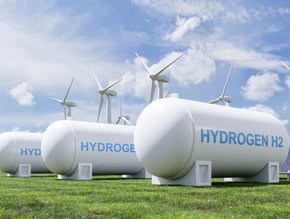Behind the Energy Industry’s Battle as Scam Calls Rise

Despite the relentless efforts of the energy and utilities industries in building trusting relationships with its client base over months and years, successful nuisance calls and texts break that down in a matter of seconds. As well as being one of the sectors ranking lowest when it comes to customer service, the energy space is being targeted by a flurry of scam communications, dragging its name and reputation through the mud.
This notoriety remains as new data shows despite nuisance calls and texts falling year-on-year, the scale of the problem is far larger than previously imagined.
Energy scams can involve, but are not limited to, people pretending to be from energy companies, government, local authorities and regulators to obtain unsuspecting people’s personal information by text, email or even knocking on doors.
Andrew Stevens is Principal of Banking and Financial Services at Quadient and is part of the company’s team of customer experience experts. Quadient looks at the world through the way that organisations interact, connect, and communicate with their customers and uses its technology to help businesses transform their customer interactions.
But as scammers move to digital channels to create nuisance communications, Quadient warns that consumers, regulators and legitimate businesses may struggle to keep up.
Scam communications — a threat to the energy industry?
A Quadient Freedom of Information (FOI) request found that the number of nuisance automated and live calls and texts reported to the Information Commissioner’s Office (ICO) fell by 10% in 2023 – from 56,015 in 2022 to 50,687.
Although this represents the second year in a row that complaints have declined, this is because more traditional avenues for scammers have become outdated.
For the first time, the ICO also included complaints about emails in its data — accounting for 37% of all complaints. This addition means the total number of complaints about nuisance communications was in fact 31% higher in 2023.
“Spammers and scammers are increasingly using more sophisticated technology to create large volumes of seemingly authentic messages,” Andrew told Energy Digital. “They know that the majority of consumers are now more active on digital channels, and have followed suit."

“Digital also offers scammers a much wider attack vector. It’s much faster and cheaper to send out mass emails than letters. If a scammer wants to reach more victims, they know that digital will get the biggest bang for their buck.”
Andrew is encouraged by the ICO now including email nuisance communications as a category of complaint, but warns it must consider newer digital channels such as social media to keep on top of this growing issue.
He added: “It is likely that nuisance communications are rife on these channels too, but the ICO isn’t currently aware of the scale and so can’t start to solve the wider problem.”
This is a rising problem in energy specifically, as operators face rising energy costs and the cost of living crisis while trying to roll out effective communications. Consumers are naturally sceptical of communications they receive from energy companies and as a result are less likely to engage, even if it is positive or helpful advice.
“When this is compounded by the ongoing cost-of-living crisis and rising energy costs, energy companies face more of an uphill battle compared to other industries in effectively communicating with consumers,” Andrew continued.
“Especially now that digital native challengers are disrupting the energy market, customers will vote with their feet if they aren’t satisfied with the customer experience they receive. Energy companies need to invest in understanding their customers’ communication preferences, but also ensure that every message is relevant and personalised to the individual.”
How energy companies can rebuild communications trust
“Energy companies need to start truly understanding their individual customers,” Andrew said. “This will help companies to personalise every communication that they send. But the only way to build this knowledge is to segment customers by persona. Providers can then understand what type of communication, over what channel, adds the most value and achieves the best outcome for that individual.”
Although 2023 saw a reduction in spam calls across most industries, energy savings and energy supply increased by 69% and 29% respectively. Andrew believes this is not surprising thanks to the ongoing cost-of-living crisis and a continual increase in energy bills, which is further disillusioning energy industry customers.
He is firm in the belief that the fact that live calls were the most complained about shows companies are clearly not communicating in the right manner, even when speaking directly to consumers, and this is damaging their reputation.
He said: “Energy companies need to re-examine how they communicate with customers. They can no longer just send out blanket messaging as these will go straight in the bin because they’re not personalised. Companies need to use customer data, like energy consumption, to understand what might motivate an individual to read and engage with communications.
“If customers don’t feel that every piece of communication is relative to them, then it won’t matter how positive or informative the message is, they’ll ignore it. Energy companies that are thoughtful about how they embed advice into their communications will be the ones that see customer behaviours actually changing.”
*******************
Make sure you check out the latest edition of Energy Digital Magazine and also sign up to our global conference series - Sustainability LIVE 2024.
*******************
Energy Digital is a BizClik brand.






